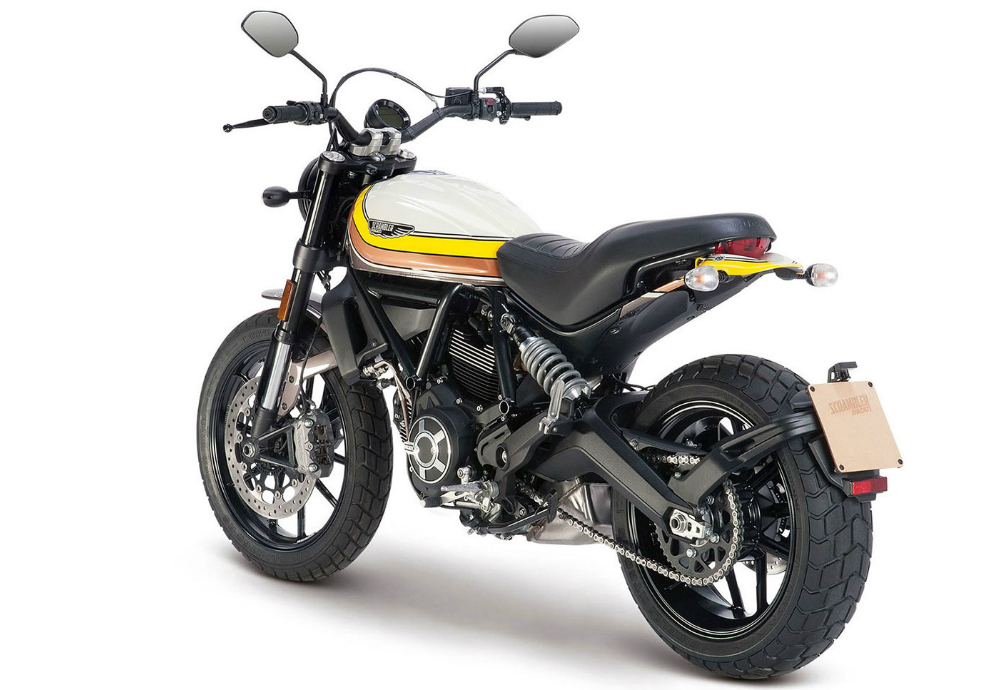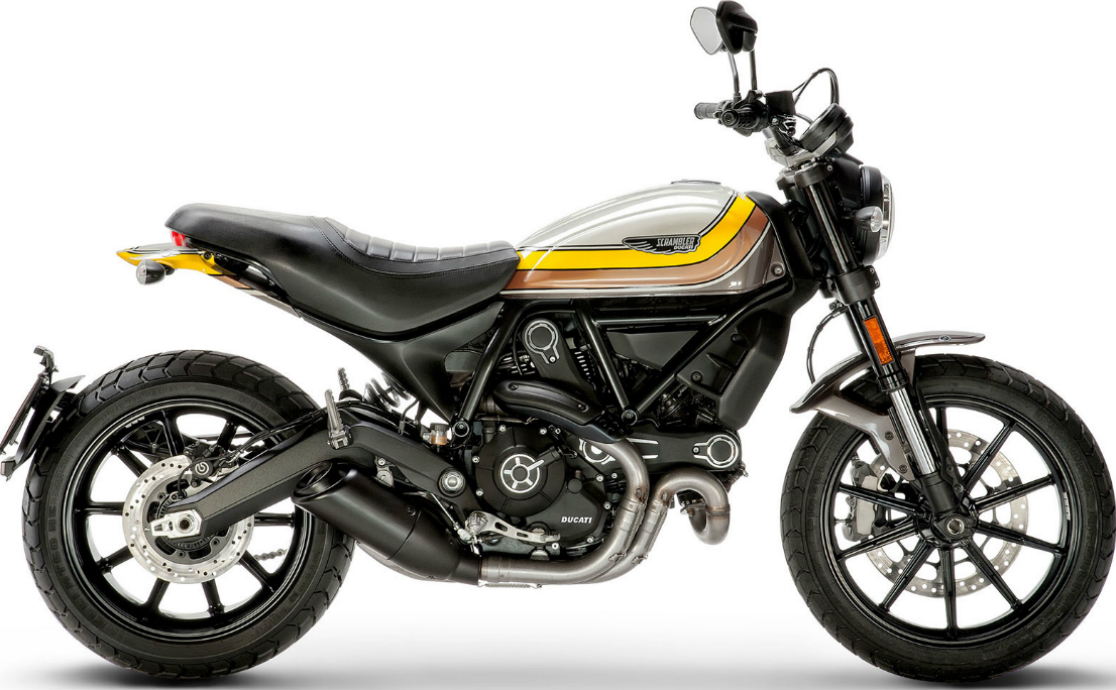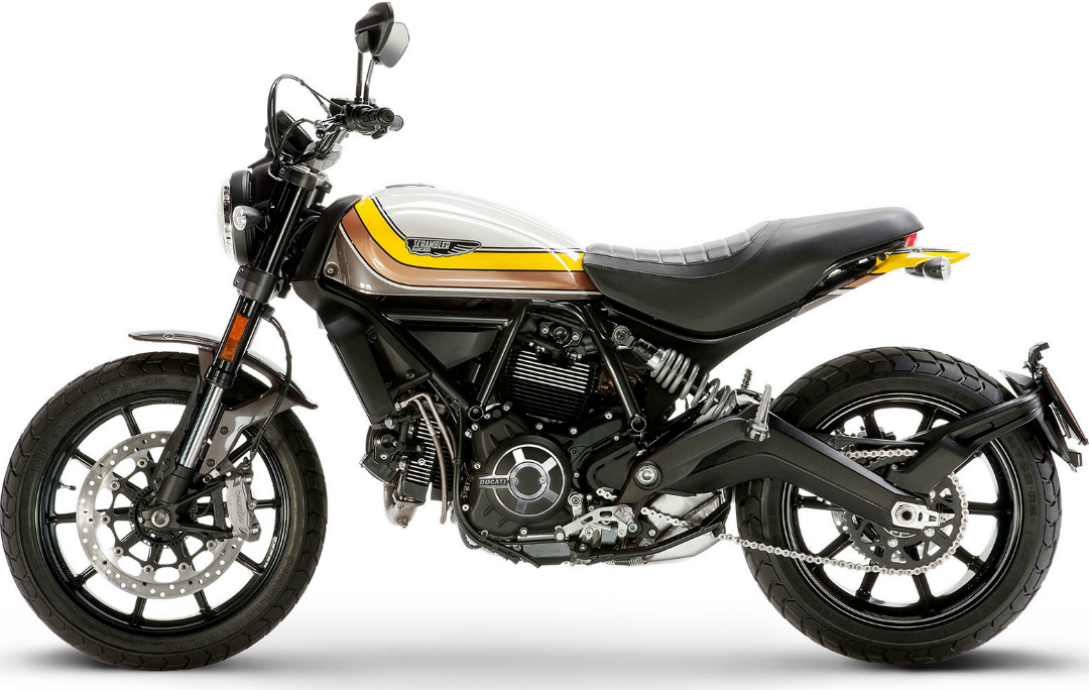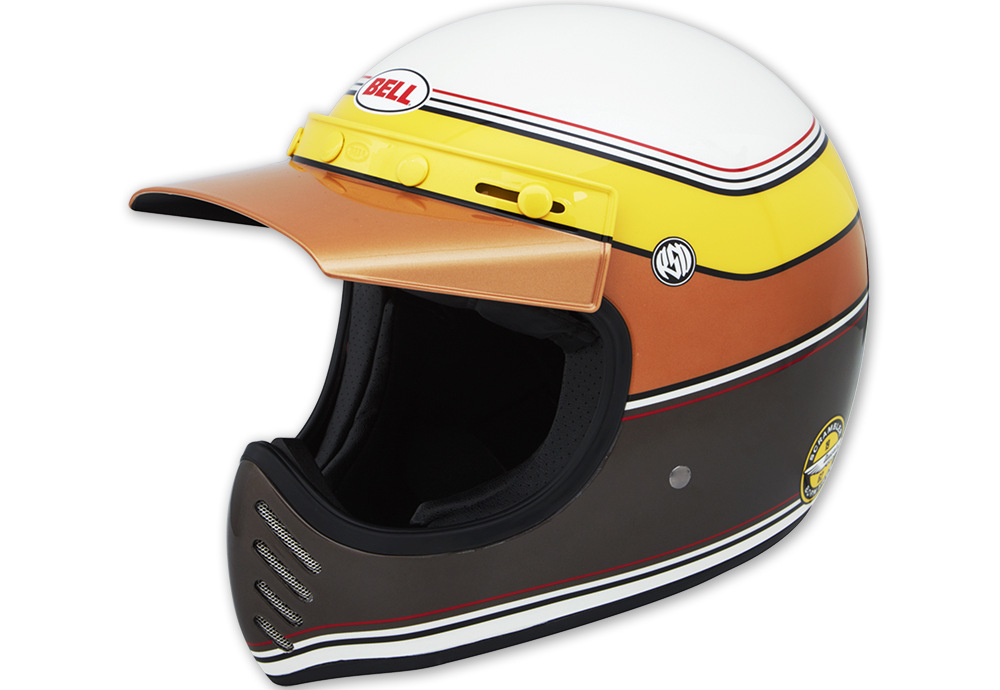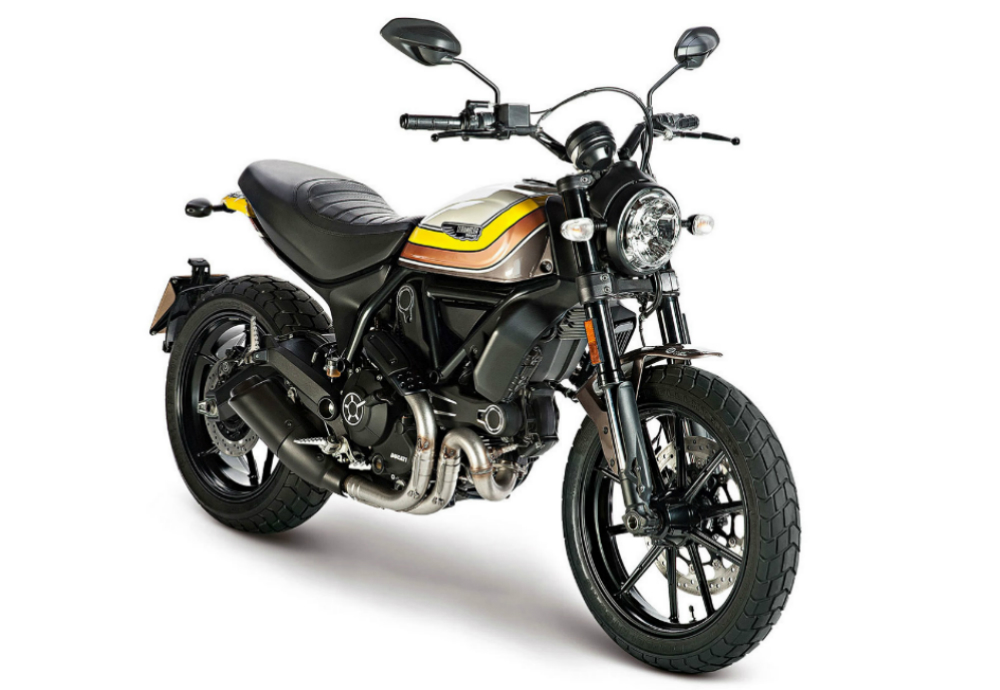When artists work with motorcycles the results are often impressive, and that is particularly true in the case of Ducati’s recently announced Scrambler Mach 2.0, created in collaboration with California designer Roland Sands.
Sands is an avid motorcyclist and high-level amateur flat track racer. His firm, Roland Sands Design, has worked with several other motorcycle companies on special editions in the past. Sands continues to help boost Hooligan and Super Hooligan Racing, the amateur version of American Flat Track professional racing, with specially modified Indian FTR750s. The designer has worked with custom Harley-Davidsons, with the BMW’s Concept 101, and teamed previously with Ducati with a XDiavel.
The Roland Sands Design edition Ducati Scrambler Mach 2.0 is not Ducati’s first experience with scrambler art. Earlier this year Ducati paired with tattoo artist Grime on another scrambler bike, the one-off Ducati Grime Scambler Maverick.
The Mach 2.0 design was inspired by a Bell Cross Idol helmet from Ducati’s Scrambler 2017 apparel collection, more of Sands’ work. The colors of the helmet and the Mach 2.0 were chosen by Sands to evoke the world and ambiance of the U.S. West Coast in the 1970s.
The Ducati Scrambler Mach 2.0 carries on the name of the Ducati Scrambler Mach 1 250 from the 1960s. In keeping with scrambler tradition and with Sands’ own riding interests, the Mach 2.0 has a low variable cross-section aluminum handlebar, a Flat Track Pro seat, black exhaust cover, and café racer brushed fins.
Power for the Mach 2.0 is provided by an L-twin Desmodromic air-cooled 803cc engine that produces 73 horsepower at 8,250 rpm and 49 pound-feet of torque at 5,750 rpm. The bike has electronic throttle ignition, a two-into-one exhaust system with a stainless steel muffler, and an aluminum silencer cover. A six-speed transmission moves through the gears.
A tubular steel Trellis frame with upside down Kayaba forks in-front and an adjustable Kayaba rear shock comprise the chassis. The bike rides on an 18-inch front wheel and 17-inch rear wheel.
With a 56.9-inch wheelbase and 31.1-inch seat height, the Mach 2.0 weighs 410 pounds wet, meaning topped off with fluids and with a full 3.7-gallon fuel tank. The starting price for the Ducati Scrambler Mach 2.0 is $10,595.
